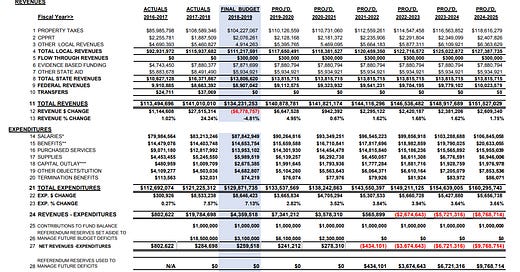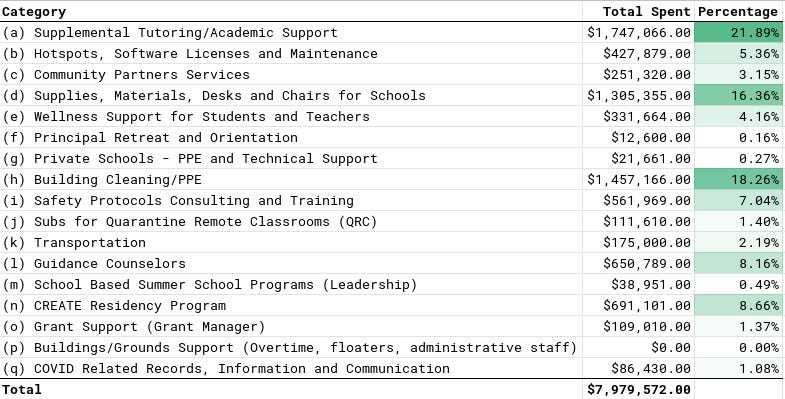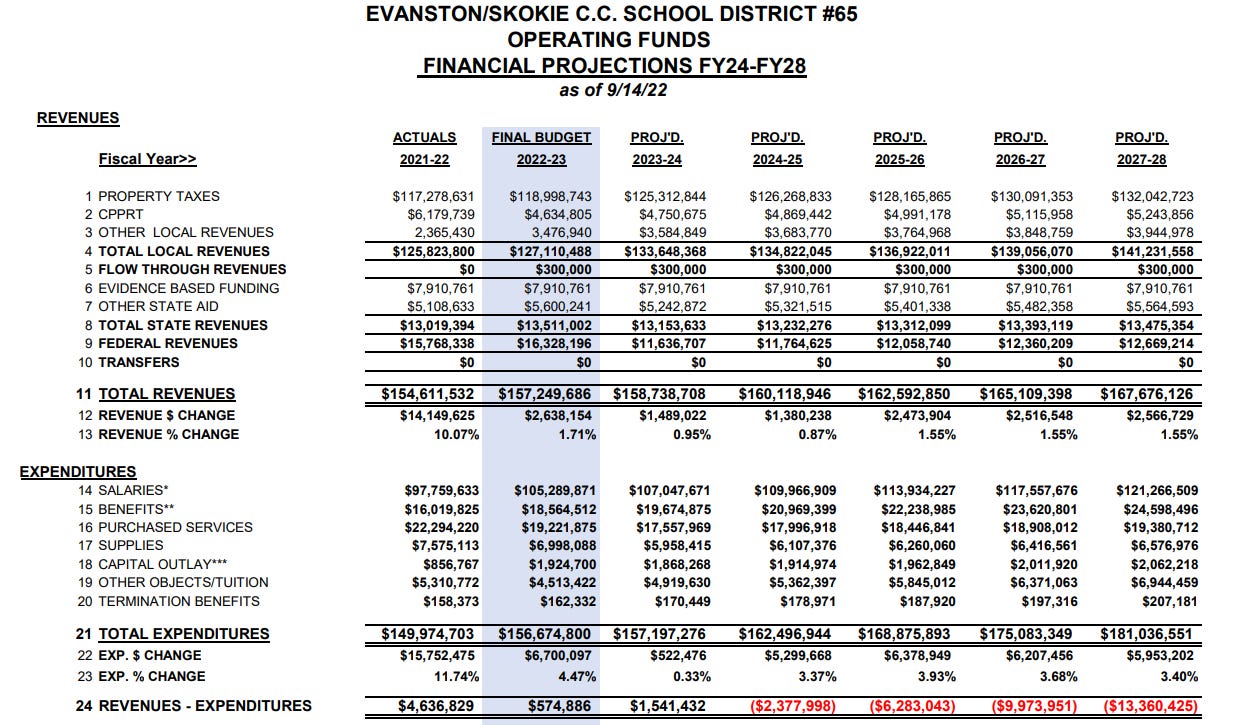This can be a very dry subject, but stick with me here. I’m going to write a multi-part series on the impact of Federal funding on District 65. Let’s start here: It’s 2019 and COVID hasn’t happened yet. Let’s look at the financial projections from 2/11/2019:
The district clearly gets most funding from local revenues; look at 2018-19 alone. Total local revenues were over $110 million and federal revenues were around $8.9 million. Note the columns in red on the right.
Even back then, the District was looking at shortfalls of $430,000 last year (2021-22), $2.6 million this year (2022-23), $6.7 million next, and $9.7 the year after. These deficits didn’t come to fruition, the district appears mostly deficit neutral with the budget this year. What happened?
COVID
The COVID-relief funding came in three tranches, all tied to various federal legislation related to COVID. Remember the CARES act? Each of these three pieces of legislation resulted in funds to school districts which are called “ESSER grants.” ESSER funding is use-it-or-lose-it and they are required to spend the funds by a certain date. After that date, the funds are no longer available.
Here’s a table of District 65’s reporting of the spend from a meeting on 11/2/2022:1
All-in, District 65 will get around $10.7 million dollars of federal funds from COVID-related bailed out programs. These funds will cease on 9/30/2024.
The District reported in the 11/2/2022 meeting where the funds are going. Their reporting wasn’t very transparent, so I’ve reformatted. You can view the raw spreadsheet here. Specifically, I aggregated the total spent along with the percentage of the funds.
Let’s identify some highlights:
Around 27% of the funding went towards COVID-specific programs such as testing, safety protocols, and quarantine classrooms.
About 34% went towards wellness support for students and teachers. This includes tutors, guidance counselors, and other wellness support.
No money has been allocated towards building improvements. This is surprising given that ESSER funding allows improvements to HVAC systems and many of the District’s HVAC systems are in need of repair!
Almost 9% of the funding has gone to the CREATE Residency Program. This is a program that the district has already spent a $600,000 grant (unrelated to COVID). This program puts resident teachers in 3 District Schools and has hired at least 2-3 full-time employees to manage the 19 residents (12 last year and 9 this year). I’ve written about this before, it’s unclear who owns the content and materials created in this program.
$12,600 went toward a Principal’s Retreat. This seems outside of the scope of what the ESSER Grants cover, so it’s unclear to me how this is even an eligible expense.
Of the total $10 million in spending, about $8 million is already allocated. So how did this impact the overall budgets? It kicked the can down the road. Below is the same set of financial projects from above, but forward looking beyond this year. The 40% of COVID funding that went towards non-COVID related line items appears to have patched up some budgetary holes.
That the $2 million+ deficits were pushed out to 2024-25 and beyond thanks to Uncle Sam. It’s hard to imagine the newly-elected House of Representatives continuing any of these programs after 9/30/2024. It is also hard to imagine the District Administration laying off all the staff they’re hired (counselors, tutors, mental health folks, and the CREATE program administration). So where does the money come from?
I’ve excluded funds related to Park School from all further discussions, for simplicity. This facility is treated differently from the federal standpoint.







